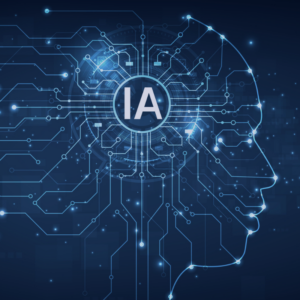Understanding the customer’s technological maturity and business reality is the gateway to a successful long-term relationship.
Publicized by Gartner in 1996, business intelligence (BI) is an ecosystem of methods and solutions for collecting, processing and analyzing data to transform it into information, and information into knowledge, from a decision-support perspective. This rise of data towards knowledge is the « BI pyramid ». Its objective? To create a unified data warehouse within a dashboard that allows to track progress against objectives using indicators, and make informed decisions based on quantified facts; in other words, to transform raw data into strategic assets.
Making your data talk
Your data indicates that every spring for the past 10 years, consumers have been undertaking renovation work on their property (home, deck, fence, garden, etc.). In your quest to find out what sells, where and when, to fuel an advertising campaign that precisely targets this seasonal need, you cross-reference historical data:
- dates;
- purchases;
- products and services;
- points of sale;
- supply;
- clients’ profile (gender, postal code, etc.);
- weather forecasts;
- results of previous campaigns during the same period.
By cross-referencing this data, you create a model of a typical consumer. Consolidated, this data is a mine of information that feeds your knowledge of is or her spring needs. Add to this cloud computing capabilities with artificial intelligence, machine learning and predictive analysis, and the right decision is obvious, such as the strategy to promote your products and services. But there’s more. If your data is reliable, of quality and up-to-date, you will discover a potential for cross-selling that can be realized not only in the spring but also in the winter, based on renovations that the consumer anticipates undertaking during that season, this year or soon. The data is there, you just need to make it speak.
Digital gold
In May 2017, The Economist magazine featured the following headline on its cover: “The world’s most valuable resource is no longer oil, but data.” That was all it took to launch, in all sectors of activity, an « arms race » aimed at extracting, transforming and capitalizing on unprecedented value-added potential. With the advent of the Web, social networks, applications, mobility and connected objects, data is proliferating, its acquisition cost is virtually zero, and it feeds increasingly sophisticated automatic learning algorithms in real time. Every time we interact with our financial institution, shop online or converse on social networks, these algorithms are at work. They learn who we are through our interactions. They can anticipate our behaviors, which they model in real time by analyzing the continuous stream of data we produce day after day. Among the many benefits of business intelligence are the following:
- increased forecasting accuracy;
- increased sales;
- better response rates to promotional campaigns;
- increased level of engagement and retention;
- increased efficiency and reduced marketing communication costs;
- reduced attrition of your customer base.
And yet. According to Gartner, between 70 and 80% of business intelligence projects are failures. Some of the pitfalls identified include poor tools, poorly defined processes and poor change management, not to mention the usual cost overruns, missed deadlines, non-value-added deliverables and, most importantly, inaccurate, erroneous or corrupted data. Conclusion? A business intelligence project cannot be improvised. To succeed, winning conditions must be met.
- Needs analysis and opportunity study
- Establishment of a dedicated team (executive sponsor, project director and manager, business analyst, data architect, database administrator, ETL architect and developer, business intelligence architect and developer, security specialist, data mining specialist, tester, quality assurance specialist and trainer)
- Data modeling
- Physical design of the data
- Design of the technical architecture
- Design and development of the ETL system (extract, transform, load)
- Design and development of key applications (modeling of dashboards and performance indicators, definition of prediction and classification models, management of queries and report models, development of a business intelligence portal, etc.).
- Deployment
- User training
- Maintenance and evolution
Understanding the customer’s technological maturity and business reality
Instead of criticizing companies and their poor business intelligence performance, it would be more constructive to take their reality into account. In many industries, IT maturity is an undeniable barrier to entry. For example, in Quebec, four out of ten manufacturing companies are managed through manual production processes, supported in part by office automation tools. For these companies, the real challenge is not intelligent data mining, but the smooth deployment of MS 365, employee training and productivity gains. Understanding the customer’s technological maturity and business reality is the gateway to a successful long-term relationship. For us, business intelligence is first and foremost a faculty that gets to know the customer well to implement progressive solutions that correspond to the evolution of his business model. Do you want to make your data talk? Let’s talk about it





